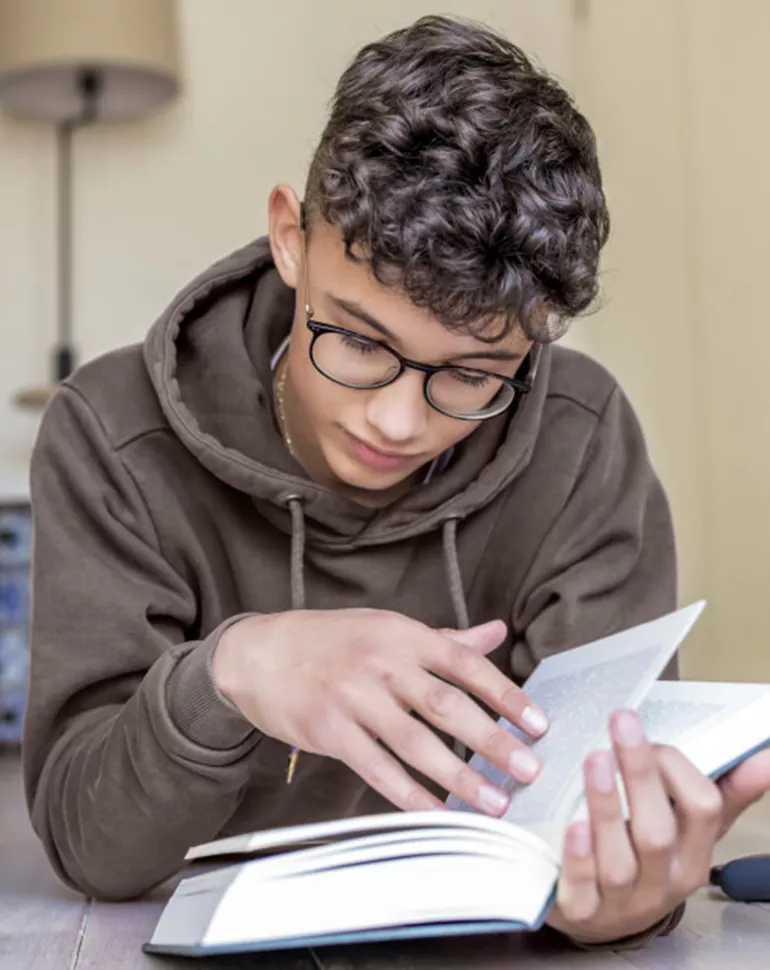A new school year begins! As the local eye care provider, you can help your patients prepare for back-to-school season and ensure their child has what they need to perform at their best. Here are some ways you can prepare your patients for a new school year.
Emphasize the importance of back-to-school eye exams
School vision screenings are useful for detecting certain vision problems like nearsightedness; however, they aren’t performed by eye care professionals trained for specific vision conditions and issues. The screening is very limited, and many vision problems go undetected and continue to affect the child’s ability to learn and perform in school.
Teachers are often the first to notice vision struggles – though they already carry so much on their shoulders. The local ECP is the person with the knowledge and foresight to help these students see at their best, so make sure to encourage back-to-school eye exams.
Tips for discussing children’s eye exams with your patients
- Educate them: roughly 80% of what a child learns before age 13 is presented visually, so good vision is necessary for optimal learning.
- Emphasize vision-rated skills children need for school: visual acuity, eye focusing, eye tracking, etc.
- Explain the signs of vision problems in children: skipping or re-reading lines, poor reading comprehension, frequent eye rubbing, etc.
- Help your patients explain to their kids how an eye exam works: not all practices do it in the same order, but the primary steps are often the same.
Show them how to handle their glasses
Encourage your patients to handle their glasses with care and to emphasize the same thing to their children. The more they care for their glasses, the longer they stay in the best condition.
How to remove glasses
Show your patients how to remove their glasses: use both hands to remove each temple from behind their ears. This way, they don't bend the arms and cause the glasses to become misaligned over time.
How to store glasses
Make sure your patients know that they should keep their glasses:
- In a hard case, often provided by you (their ECP)
- Facing upwards in the case to avoid scratching
- Away from household detergents and beauty products such as hairspray and perfume
Show patients how to clean their glasses
It seems straightforward, but more than likely, your patients aren’t cleaning their glasses in way that’s best for the longevity of the lens. Pass long these tips for cleaning their glasses – you could also share these tips on your social channels to inform.
- Wash your hands with lotion-free soap
- Clean your lenses and frame regularly with water and a drop of mild liquid lotion-free soap
- Gently shake off water drops — dry your lenses with a soft, clean microfiber lens or lint-free cotton cloth
- Inspect and clean again if needed
Explain what not to do with their glasses
Inform your patients on what to avoid when it comes to caring for and cleaning their children’s glasses:
- Don’t wipe your lenses with paper products
- Don’t wipe your lenses with a towel that has been washed with fabric softener
- Don’t spit on your lenses to clean them
- Don’t put your glasses down on heat sources, such as ovens
- Don’t put your glasses down on the curved side of the lenses
- Don’t put your glasses on your head or hat
Learn other lens care do’s and don’ts, as well as how to properly clean your glasses.
Guide them on an eye-healthy diet
According to the American Optometric Association, adding certain foods can greatly improve your patients’ eye health. When giving them advice for the new school year, make sure you encourage a nutritious diet full of ingredients that include:
- Lutein & zeaxanthin (broccoli, corn, carrots)
- Vitamin C (oranges, grapefruit, and tomatoes)
- Vitamin E (sweet potatoes and nuts)
- Omega-3 fatty acids (salmon and tuna)
- Zinc (nuts, seeds, some red meat)
And find unique ways to hydrate!
Discuss blue light & limiting screen time
Many of your patients may not even realize their symptoms of digital eye strain (DES) and computer vision syndrome (CVS) are related since many symptoms, such as itchy eyes, are easily confused with another cause, like allergies or dry eyes.
Take a few minutes to educate your patients on the impact of digital eye strain and help them diagnose whether or not they – or their children – are experiencing eye strain symptoms.
Premium computer lens designs, like HOYA’s Sync IIITM boost lens design, are answering the call by offering accommodative support and reducing the visual stresses from too much screen time.
Last-minute reminders for your patients with children
Kids love to express themselves. Remind your patients to make the eye care process a lot more fun by letting the kids pick out their own glasses, or you (the ECP) could make fun suggestions, such as light-reactive lenses.
Remind them to:
- Set the right expectations for when/how often their kids should wear their glasses (if not all the time)
- Tell their kids not to share their glasses with others
- Bring their glasses with them to school even if they wear contacts
And a last reminder for you: the back-to-school season is a great time to discuss various coatings and treatments. Talk to your patients about anti-reflective and scratch-resistant coatings, which guarantee comfort, performance, and durability.
